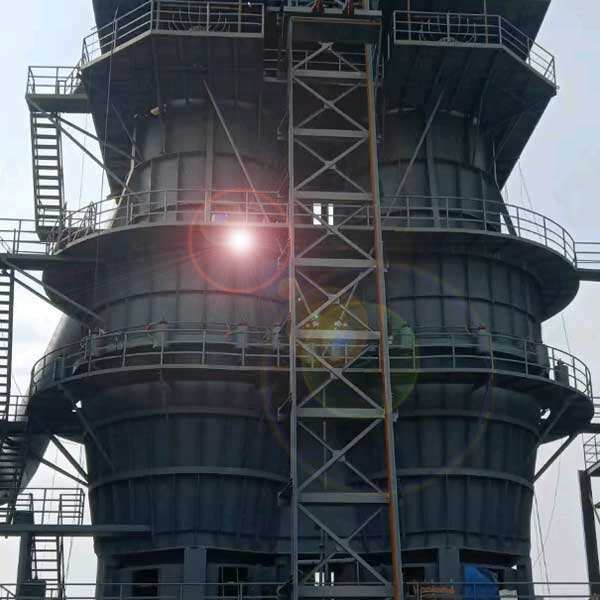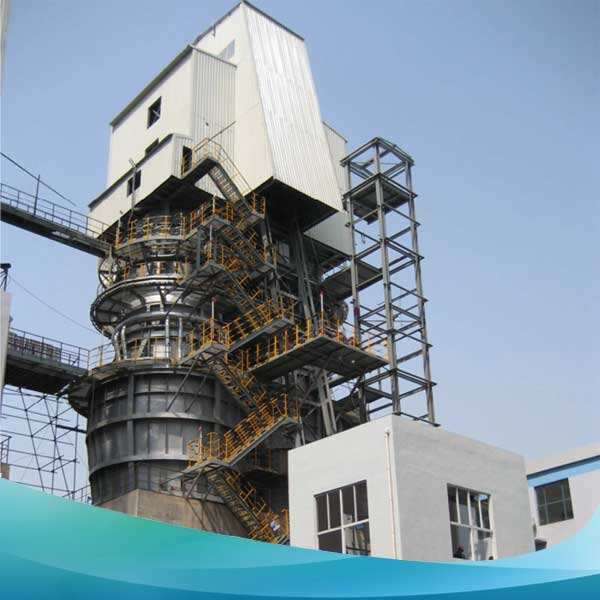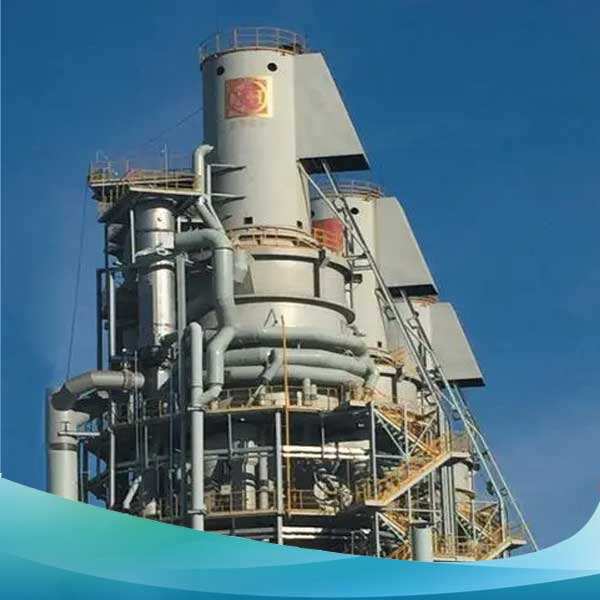الفُرن الدوار: عملية تصنيع الأسمنت. سيكون هذا نظرة عملية على العملية المعنية في صنع الأسمنت وكيفية استخدام الأفران الدوارة لصنعه. الفرن الدوار هو معدات ميكانيكية كبيرة في خط الإنتاج الكامل ويؤثر بشكل كبير على مختلف المجالات الصناعية. تخيل أفراناً ضخمة وسخيفة للغاية يمكنها القيام بعدد من المهام المفيدة للغاية. أثناء دورانها حول محورها، تستخدم هذه الآلات الأسطوانية حركاتها لتحويل المواد الأساسية إلى مكونات معقدة. يمكن للأفران الدوارة الصناعية أن تقوم بمجموعة واسعة من المهام، من تجفيف المعادن إلى معالجة كميات هائلة من النفايات، مما يجعلها متنوعة ومفيدة للغاية. واحدة من أهم الفروقات بين الأفران الدوارة الحديثة والطرز القديمة هي أنها يمكن أن تجري تغييرات طفيفة جدًا في سرعتها الدورانية. وهذا يعني أنه باستخدام محركات سرعة متغيرة، فإن فرنك يجمع بين نقل الحرارة ويحتاج إلى الكمية الصحيحة من وقت المعالجة حتى تكتمل المعاملة الحرارية للمواد. بالإضافة إلى ذلك، يمكن لأنظمة تبريد القشرة تخفيف الضغط الحراري بشكل أكبر، مما يسمح بحياة أطول لمعداتك، وأنظمة الاحتراق الفائقة الكفاءة مع التوقيت المزدوج يمكنها تقليل الانبعاثات. كما أنها تتيح تحسينات إضافية في كفاءة التشغيل من خلال تعديلات ديناميكية دقيقة بناءً على أنظمة تحكم متقدمة مع مراقبة وتحليل بيانات في الوقت الحقيقي.
في الوقت الحاضر، أصبحت الأفران الدوارة واحدة من الأدوات الأساسية التي تساعد في الممارسات الصناعية والتصنيعية المستدامة. يتم استخدام أجهزة السيطرة على التلوث الحديثة مثل غسالات الغاز والفلاتر في هذه الأفران لتقليل الانبعاثات الضارة. علاوة على ذلك، يمكن تشغيل الأفران الدوارة باستخدام وقود بديل مثل الوقود المستخرج من النفايات، مما يقلل الاعتماد على الوقود الأحفوري ويقدم طريقة صديقة للبيئة للتخلص من النفايات. تحلل الجير إعادة تدوير ما يمكن تصنيفه كحرارة ناتجة عن النفايات، والذي يتم تحقيقه عن طريق تقليل البصمة الكربونية (على الأرجح الطاقة الإجمالية)، يصبح أكثر كفاءة بشكل استباقي لهذه الأنظمة لإعادة إقامة وظيفتها على الأقل جزئيًا
تُستخدم الأفران الدوارة بواسطة العشرات من الصناعات بسبب مرونتها. وبشكل كبير تُستخدم في تحسين الطرق من مستويات منخفضة إلى 1000 طن/ساعة وما فوق، بالإضافة إلى استخدام الأسرة المميعة لمناطق استرداد الحجر. في إدارة النفايات، تُستخدم المحرقات لمعالجة والتخلص من النفايات الخطرة، الطبية، والنفايات الصلبة البلدية... تُستخدم الأفران الدوارة لتنفيذ عمليات مثل معالجة علف الحيوانات قبل الاستخدام، تجفيف الكربون المنشط وأكسدة وحل القاذورات؛ كما تُستخدم أيضًا في إذابة المكونات الكيميائية المختلفة أثناء معالجة المعادن. إن مرونة الأفران الدوارة هي ما يتطلب استخدامها في العديد من التطبيقات لتحقيق العمليات المرغوبة.
التحكم في درجة حرارة المادة يمكن أن يكون جانبًا رئيسيًا لتشغيل الفرن الدوار، كما قد تعلم جيدًا من تشغيلك لضوابط المجفف. التأثير الحراري يؤثر على معدلات التفاعلات الكيميائية (المعالجة الحرارية) والتغيرات في الخصائص الفيزيائية (التجميد). في صناعات الإسمنت / التحلل الحراري وغيرها من العمليات، من الضروري الحفاظ على درجات الحرارة لتحقيق جودة أفضل للمنتجات. توفر Pensalab تقنيات جديدة في الرسم الحراري المرتبط بالمناطق الذكية ووضع المدفئات التي تقدم توزيعًا ثابتًا للحرارة عبر طول الفرن. نظرًا لتحكمها في إمداد الوقود، تدفق الهواء والتسخين بطريقة أكثر كفاءة، فلا يوجد هدر للطاقة كما هو الحال مع بعض العطاءات الخاطئة حيث تكون درجة الحرارة أقل من 0 أو أعلى من الحد الأقصى لبعض المواد مثل الفولاذ المقاوم للصدأ بحيث لا يحدث أي تدهور بسبب درجات الحرارة العالية
تلعب الأفران الدوارة المصممة خصيصًا دورًا مهمًا في معالجة المواد بشكل صحيح. يتم تصميم جميع هذه الحلول بالنظر إلى خصائص مادة التغذية وسعة الإنتاج المناسبة. تقدم إحداها بناءً وحدويًا لسهولة التركيب والترقية، بالإضافة إلى مواصفات المعدات الصحيحة التي تضمن نتائج طويلة الأمد حتى في أصعب ظروف العملية. فإن الحصول على الوظائف التي تتيحها نوع من أنواع التخصيص يستحق بلا شك الرسوم الإدارية الإضافية لأنها لا تسمح بزيادة التلقائية فحسب، بل ستوفر أيضًا عليك تكاليف الصيانة بفضل هذه الرسوم التشغيلية المنخفضة - وهو ربح لا جدال فيه لتحقيق عائد استثمار مربح.
إذن، في النهاية، يثبت أن الأفران الدوارة هي ما يلبي سلسلة من المتطلبات من الصناعة وحماية البيئة. نظرًا لقدرتهما على خدمة تطبيقات صناعية واسعة والعملاء الذين يحتاجون إلى التحكم في درجة الحرارة الساخنة، بالإضافة إلى وظائف معالجة المواد التي تقدم مستوى أداء غير قابل للتراجع، فإن قيمتها ستستمر لفترة طويلة في العصر سريع التطور للتكنولوجيا المتقدمة في الصناعة. بينما تتجه الصناعات بشكل أكبر نحو الاستدامة، سيبقى الأفران الدوارة كأحدث تقنية لتوفير مستقبل أكثر خضرة.
توفير القيمة لطرق تشغيل وتصميم مختلفة، حيث قامت هذه الأنظمة بـ'تحديث قلب أي فرن دوار قديم' من حيث تركيز العملية أو المنتج. المحركات ذات السرعة المتغيرة - توفر سيطرة أكبر على سرعة دوران الطبل ولها ضبط دقيق يُamaximizes وقت انتقال الحرارة. أنظمة التبريد في الهيكل تساعد في تقليل الإجهاد الحراري وزيادة عمر المعدات. الفرns الحديثة لديها أيضًا أنظمة احتراق حديثة لتزويد طاقة مثالية ويمكنها، حوالي خمس إلى ثمان مرات في السنة، تغيير خليط الوقود الأساسي بحيث تنخفض الانبعاثات بشكل كبير. المراقبة المباشرة في الوقت الحقيقي مع تحليل البيانات تضمن التركيز الكامل على كل عنصر من النظام، مما يغلق العمليات لإدارة عملية دقيقة وجعل التعديلات بمجرد تغير المتغيرات للحفاظ على الظروف في أفضل حالاتها.

في الطبيعة المتغيرة لفرن الدوران في الحياة المعاصرة، لا يبحث عن احتمالات بقدر ما يبحث عن تحول حتمي بعد الاستدامة التي أدت إلى ظهور نسخ مختلفة منه. يتم تقليل انبعاث الجزيئات والغازات الضارة من هذه التكنولوجيات بشكل كبير من خلال تجهيز الأنظمة بتقنيات حديثة إنتاج الجير إجراءات السيطرة على التلوث مثل غسالات الغازات والمرشحات. كما أن حلًا متكررًا آخر لتقليل الاعتماد على الوقود الأحفوري هو قدرته على العمل باستخدام وقود بديل - حتى ذلك الذي يستخدم النفايات كمادة خام - مما يجعله طريقة مناسبة لإدارة القمامة. يمكن توفير المزيد من استهلاك الطاقة من خلال أنظمة استرداد الحرارة التي تلتقط الحرارة الناتجة عن النظام وتعيد توجيهها إلى العملية، مما يقلل من البصمة الكربونية الإجمالية مع توفير الطاقة.

كما تم ذكره سابقًا، أفضل شيء عن الأفران الدوارة هو أنها يمكن استخدامها في صناعات وتطبيقات متعددة. فهي تشكل جزءًا أساسيًا من عملية التعدين على نطاق صغير إلى كبير في سوق التعدين، حيث تعتبر خطوات الفصل الموجودة في الموقع ضرورية للمسارات الحديدية. وفي سياق إدارة النفايات، يتم استخدامها لعلاج النفايات الخطرة (التحريق/الاحتراق)، والنفايات الطبية (الأوتوكلاف أو التسخين بالميكروويف) والنفايات الصلبة البلدية بأمان. وفي صناعة الغذاء والزراعة، قد فرن ليمون دوراني تُستخدم لمعالجة المنتجات مثل أعلاف الحيوانات أو الأسمدة؛ بينما تستخدمها الصناعة الكيميائية لإجراء عدد من التفاعلات. مجموعة الوظائف التي يؤديها الفرن الدوار يجعله مكونًا أساسيًا في العديد من التطبيقات الصناعية لمعالجة المواد.

يمكن للتحكم في حقل درجة الحرارة في الفرن الدوار أن يلبي هذين المطلبين بشكل جيد، وهو مرتبط مباشرة بالتغيرات الكيميائية التي تؤدي إلى الخصائص الفيزيائية. التحكم في المتغيرات العملية مهم أيضًا لأن الخصائص المعتمدة على درجة الحرارة تتحقق أثناء إنتاج معظم المنتجات مثل الأسمنت، الكلنكر والمواد المحروقة. يتم الحصول على تدفق حراري متسق من طرف الفرن إلى الطرف الآخر مع تقسيم محدد ووضع عناصر التدفئة باستخدام تحليل حراري مفصل مستخدمًا أحدث التقنيات. وعلى الناقل، يوجد تحكم أوتوماتيكي في درجة الحرارة مع استهلاك منخفض للطاقة لأن ارتفاع الحرارة يمكن أن يحدث أثناء المعالجة وتناسب إمداد الوقود أو تدفق الهواء الذي يتم ضبطه في الوقت الحقيقي (بواسطة مروحة متحكم بها بالردود الفعلية)، وكذلك التدفئة المباشرة أو غير المباشرة الاختيارية لمنع التدهور.
أكثر من 20 عامًا، ملتزمون بالتطوير والبحث عن تركيب الفرن الدوار لمصانع الحجر الجيري. يتميز بأنه أوتوماتيكي بالكامل مع أقل استثمار تكلفة. يمتلك فرن الحجر الجيري عمرًا افتراضيًا أطول ويمكن الاعتماد علينا بسبب الخدمة الممتازة والأفران ذات الجودة العالية.
قامت الشركة بشكل أساسي بتنفيذ هندسة البرامج، والتصميم، وتركيب المعدات وتشغيل الأفران الإنتاجية لتحقيق كيلن جير موفر للطاقة وصديق للبيئة. قامت الشركة ببناء أفران مُفعّلة بأحجام مختلفة، بما في ذلك 150م3، 170م3، 200م3، 250م3، 350م3، 500م3، وما إلى ذلك. تم تشغيل هذه الأفران بنجاح وأنتجت تأثيرًا مذهلاً! باستخدام أحدث التكنولوجيا للكوك كيلن الجير العمودي، تم تطوير كيلن الجير العامل بالغاز ليصبح مثل الكيلن الدوار، وقد تم توقيع عقود التصميم مع العديد من الشركات.
منذ فترة طويلة، لدى AGICO فريق تقني محترف، وتقنية إنتاج ناضجة، وخبرة إنتاجية غنية، مما شكل نظام إدارة كامل لتقنيات إنتاج الأفران العمودية، مما يجعل تقنية الفرن الدوار لإنتاج الجير الموفر للطاقة والصديق للبيئة مثالية. هذه التقنية تتميز بتكلفة استثمار منخفضة، وجودة تلقائية عالية، وجودة منتجات متفوقة، بالإضافة إلى استهلاك طاقة منخفض وعمر أطول للأفران. وقد تم استخدامها على نطاق واسع في صناعات الميتالورجيا، المعادن غير الحديدية، الكيميائيات، مواد البناء، وكذلك في قطاعات أخرى مثل العمليات التحويلية العميقة وما إلى ذلك.
AGICO لديها فريق تقني متخصص للغاية في مشاريع المفتاح الشامل (EPC)، والتي تشمل الصنع، التصميم، التركيب، التصحيح، الصيانة، والخدمات الأخرى. توفر نظام خدمة شامل ما قبل البيع وما بعد البيع، وتقدم الدعم الفني اللازم لتلبية متطلبات العملاء.